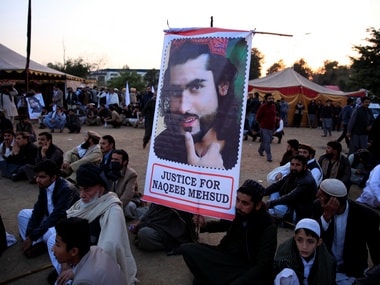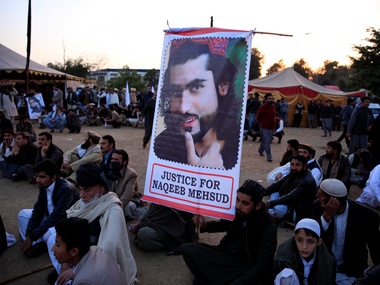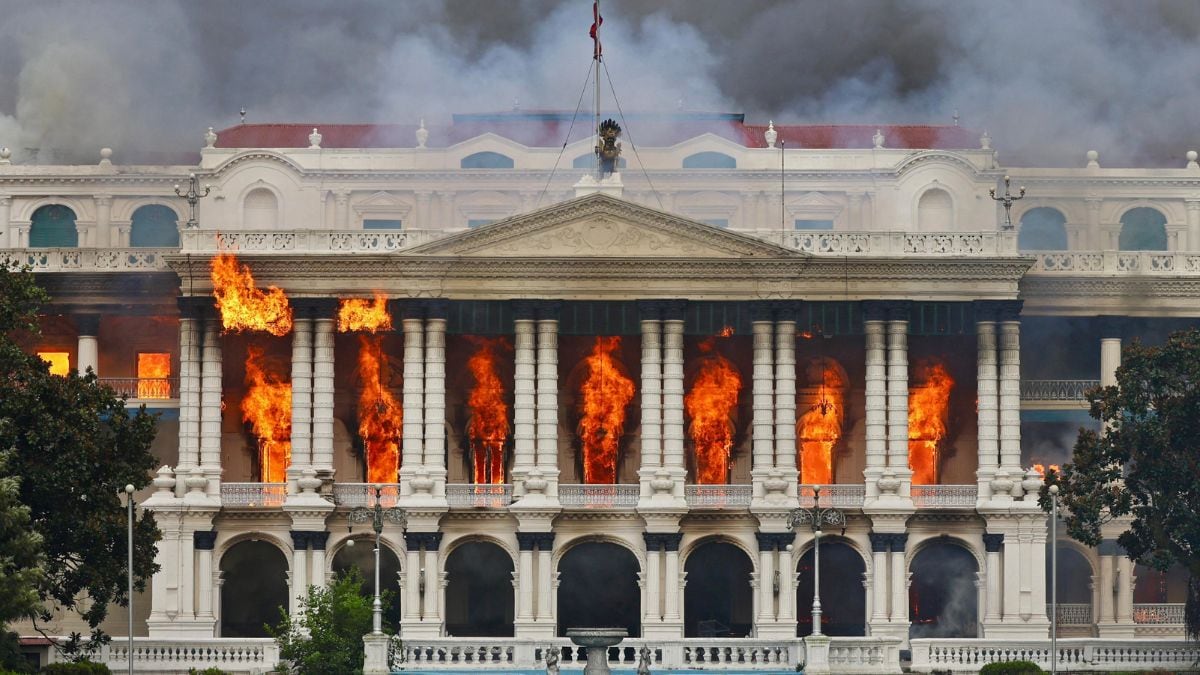The Pashtuns are angry, and it’s been a long time coming. The wave of resentment against the years of exploitation resulted in one of the largest protest movements in Pakistan in a decade when thousands came together in Peshawar on 8 April in support of the Pashtun Tahafuz Movement (PTM). It is also the first time that Pashtuns from across the country have demonstrated peacefully for their rights. The the movement has remained peaceful in the three months since their protests have begun. Pashtuns, or Pakhtuns as they are often called, are a hardy lot. Their history is that of fending off various invaders, including the Durranis of Afghanistan, the Sikhs under Ranjit Singh, and later the British who were to use their territory for covert games and warfare for nearly a century. From 1846 onwards, they were subject to raids, intrigues, and burning of their villages as the British sought a way of controlling the tribes without actually stationing troops permanently. The virtually unilateral demarcation of the Durand Line in 1896 upended tribal lives, and closed what was naturally and traditionally an open border, leading to a cut-off of trade routes and division of families. British ‘pacification’ of these areas led thereafter to the creation of the North West Frontier Province, which was divided into various ‘agencies’. This was done by creating zones of settled areas and tribal areas, demarcated outwards from Peshawar in a series of concentric administrative zones, each under proportionately reducing colonial control. Thus the settled areas were directly ruled, while the tribal areas were left largely alone. Both, however, came under the ambit of the Frontier Crimes Regulations, a strange admixture of tribal law and British interests. A system of endowments and benefactions was used to control tribal heads and clan leaders. Having burnt their fingers badly, the British retained only a few posts along major mountain passes, and left the rest to local militias, paid with English money through favoured tribal leaders. [caption id=“attachment_4438483” align=“alignleft” width=“380”]  Pashtuns protesting in Pakistan. Reuters[/caption] Independent Pakistan largely followed these practices. The 1973 constitution makes FATA part of Pakistan, but is under the direct executive of the President through Articles 52,59, and 247. Though fundamental freedoms are part of the constitution, the FCR denied these to FATA, including right to appeal, freedom of speech and right of political association. The fact that the FCR was abolished in Khyber Pakhtunkhwa in 1956 added insult to injury. Despite frequent representations for change to Islamabad, there was little change on the ground due to both structural deficiencies and later circumstantial limitations. For instance, while adult franchise was granted in 1996 resulting in the first direct exercise of vote for elections to the National Assembly, the right to representation did not mean the right of legislation. That right continued to be held by the President of the country. Second, while the Local Government Act was extended to these areas in 2002 and 2012, it failed to get traction due to the requirements of a very adverse security situation . By 2002, matters were very bad indeed. The Afghan adventure begun by Prime Minister Zulfikar Bhutto in the 1973 to undercut Kabul’s ambitions, had ballooned into a major operation with the assistance of the US and Saudi Arabia among others. In no time, the tribal areas had become the hub of training of some 1.8 million mujahideen between the years 1982-88 in 92 camps most of which were in the tribal areas or adjoining it. A census of refugees by the United Nations High Commissioner of Refugees indicated that there were some 3,049,268 refugees, with 64 percent in camps in the tribal areas. This decade led to four important outcomes. First, the opium trade spread into Pakistan as well, setting the foundations for a corrosive social evil. A Khyber Pakhtunkwa Health Department report last year counted some 140,000 people on heroin and another 80,000 on opium in tribal areas overall. Second, markets in the tribal areas became the centre for the trade in weapons of all kinds, worsening already violent inter-tribal feuds. Third, weaponisation of society led to a shift in the social order from the authority of the tribal maliks to those with the power of the gun behind them. The resultant growth of local warlords ripped the area apart, particularly as many thrived with the support of Pakistani intelligence. Fourth, religious clerics who had been earlier on the sidelines of tribal society became central to a war fought on religious lines. Families lost their sons to jihad and suicide bombings in Afghanistan and later in Pakistan itself, as a new breed of jihadis emerged, who were intent on hitting the Pakistani state that had bred them. However the worst was still to come. By mid-2002, international media was pointing out that the source for attacks on US soldiers in Afghanistan was undeniably from the 25 odd groups operating in the tribal areas, with some of them engaged in hitting targets inside Pakistan. With its own jihadi groups also in these locations, the army was reluctant in the extreme to undertake operations. Faced with consistent US prodding, the then Peshawar Corps Commander Lt Gen Orakzai negotiated a deal with tribal leaders to allow Pakistan army operations in some parts of the tribal areas, in return for a development package of some PKR 10 billion. A Dawn report also mentions that the agreement included government’s assurance to abide by its international commitments. Ten years down the line, it was more than evident that both promises were reneged on. First, the human development indicators in FATA remained dismal and well below even Pakistani standards. Second, far from abiding by any international or humanitarian considerations, FATA was bombed with aircraft and artillery by Pakistan Air Force and Army in attacks that were presented as part of a counter terrorism effort. This resulted in some 2 million fleeing the area in 2015 according to UN agencies . Unknown numbers of Pashtuns fled to other parts of Pakistan, including Baluchistan and Sindh as Army operations climbed. With this came that dreaded phrase ‘enforced disappearances’ which referred to those knocks in the night, when young men were carried off for ‘questioning’ and never seen again. Which brings us fast forward to the present protests, and explains why the Pashtun Tahafuz Movement (Pashtun Protection Movement) has received such massive support, from a very small beginning with just 22 supporters in January 2017 at Islamabad. That sit-in was sparked by the killing of a young aspiring model Naqeebullah Mehsud on the charge of being a militant, typifying all that Pashtuns have had to undergo over the last several years. Using the hashtag #PashtunLongMarch , the sit in drew in several hundred more on succeeding days. Their demands were simple at that stage — punish SSP Rao Anwar who was known as an ‘encounter cop’, remove the hundreds of land mines and unexploded Ordinance (UXO) strewn across tribal lands, and above all, stop identifying Pashtuns as Taliban and arresting them. After an initial and sensible agreement to address these genuine demands, and preventing SSP Anwar from fleeing the country, the state responded by arresting three PTM leaders, and worse, seems to have patronised a counter-protest by a group called the Pakistan Zindabad Movement which – no surprises – accused Indian and Afghan intelligence agencies of supporting the PTM. Unsurprisingly, protesters hardened their position as the state swung into control mode. There has been talk of going to the United Nations, appealing to world leaders, and even demands for the removal of the Army’s National Logistics Cell from specific areas. Meanwhile the young chairman of the movement Manzoor Pashteen insists that all demands will remain within the constitution, and that their protests will remain non violent. Rather naively, he advised youth to reject hatred. But he’s a marked man, and he knows it. After all, he’s identified General Headquarters as the source of his people’s problems. Fortunately for Pashteen, major political parties have now begun to take note of his movement. Four days after the massive Peshawar rally, where hundreds arrived with placards carrying pictures of their missing brothers, fathers and sons, Pakistan Tehreek-e-Insaaf ‘s Imran Khan, made a belated statement of support. Khan should have been at the forefront of support, given that he claims to represent tribal interests. The Pakistan’s People’s Party’s Bilawal Bhutto showed considerable empathy, and other parties are now likely to line up, even as the Army Chief General Bajwa warned against ’engineered protests’ a day later. The difficulty for the Pakistani state arises from the following. First, the PTM is not just about Manzoor Pashteen. It is supported by a whole medley of organisations that range from Pashtun welfare organizations, Women’s Foundations and Youth Movements, and quite simply hundreds of families who have had enough. Support also comes from youth wings of political parties like the Awami National Party, who chose to ignore their leaders’ ban on participation. Second, the Peshawar rally participants declared that they stood also for the oppressed elsewhere in Pakistan, including Punjab. This has widened the base to include youth everywhere. Students of prestigious colleges in Punjab have already declared support. Third, with elections around the corner, the Pashtun’s have shown themselves to be a voter base of formidable proportions. That’s not something any party worth its salt can ignore. And fourth, the issue has caught world imagination, simply because Pashtun discontent is founded on nearly a century of oppression. With more protests planned in the weeks ahead, the Pakistani deep state will likely resort to its usual maneuvers which include the infiltration of saboteurs to instigate violence, subsequent arrests, and allegations aplenty against the leaders in a media made pliant by the recent strictures against one of the largest news channels in Pakistan. However as history shows, Pashtuns are made of hardier stuff. The time may have finally come for them to stand their ground.
The Pashtuns are angry, and it’s been a long time coming. The wave of resentment against the years of exploitation resulted in massive protests recently.
Advertisement
End of Article


)

)
)
)
)
)
)
)
)



